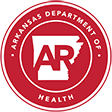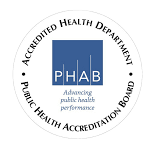Cross Connection/Backflow Prevention
Consumer /Public Overview of Cross Connection Control
This article is intended to give the reader a basic understanding of what backflow is all about and why backflow of water combined with the presence of cross-connections can be a source of contamination to the public water systems.
Q: What is Backflow?
Answer: Backflow, within the context of the drinking water industry, means the reversal of water flow from its normal or intended direction of flow. Whenever a water utility connects a customer to its water distribution system, the intention is for the water to flow from the distribution system to the customer. However, it is possible, and quite common, for the flow to be reversed and flow from the customer's plumbing system back into the public water distribution system. If cross-connections exist within the user's plumbing system when backflow occurs then it is possible to contaminate the public water system.
Q: What is a Cross-Connection?
Answer: A cross-connection is a connection of a portable water system to a non-potable system or a system of questionable water quality.
Q: What Causes Backflow?
Answer: Backflow may occur simply because the public water system lost pressure. Backflow, reversal of flow from its normal direction, is usually caused by a backpressure or backsiphonage
Backpressure is a condition that manifests itself when the water pressure within an establishment's plumbing system exceeds that of the water distribution system supplying it. This backpressure might be caused by a difference in elevation, by a pump, by a steam boiler, or by other means.
Backsiphonage may occur when the water pressure within the distribution system falls below that of the plumbing system it is supplying. This might happen due to a fire department pumper truck pumping water out of the distribution system faster than the water treatment plant equipment can replace it. The water rushing downhill due to a broken water main might create a partial vacuum on some plumbing systems connected in the vicinity of the break and cause a backsiphonage. Perhaps, simply flushing the water pipes to clean them may cause this phenomenon.
Q: How Does the Water Distribution System become Contaminated?
Answer: Where backflow occurs and cross-connections are present you have all of the necessary elements for contamination of the plumbing system and subsequently contamination of the public water system:
Backflow occurrence = link + force
Backflow occurrence = cross-connection + backpressure or backsiphonage
For example, suppose an automatic lawn sprinkler system is spraying a lawn when all of a sudden a backsiphonage occurs due to a fire truck pumping water or water rushing from a broken water main. The resulting backflow from the lawn sprinkler system will flow into the plumbing system and then into the water distribution system. As the water backflows, it can suck contamination into the lines through the sprinkler heads, such as insects, pesticides, herbicides, fungicides, fertilizer, worms, and other contaminants. Once in the distribution lines, the contamination could go anywhere in the public water system.
Q: Can Cross-Connection Be Hazardous?
Answer: Yes, in the old day's many disease epidemics were caused by cross-connections between potable water systems and raw river water or lake water piping systems. Epidemics of typhoid and cholera were often caused by backflow occurrences from these sources. People died or were very ill. A few of the contaminants documented in the literature as caused by cross-connections are:
untreated river, sea or lake water, pesticides, herbicides, fungicides, propane gas, worm treatment for poultry, boiler water with chemicals, anti-freeze, blood and body fluids from funeral homes, chemicals, water from car washes, dyes, sewage, freon, worms, heavy metals such as arsenic, petrochemicals, water from flush toilets, bacteria cultures from laboratories, and others.
This is only a partial list of documented cases of potable water contamination by virtue of cross-connections and backflow occurrences. They still happen every day, somewhere.
Q: What can be done to Prevent Contamination of our Public Water Systems Due to Cross-Connections?
Answer: Modern technology has provided us with new tools to prevent backflow from non-potable sources into our public water systems. They are called backflow prevention assemblies; reduced pressure (RP) or double check valve (DC)-type. Unlike the older accepted, non-testable, hardware for preventing backflow such as swing check valves, dual check valves and atmospheric vacuum breakers (which still have their applications), the RP and DC-type backflow prevention assemblies are testable to assure they are in proper working order. Placed at the site of the cross-connection they can protect the plumbing system from contamination. Placed just downstream of a water meter to an establishment, they can protect the public water system from any contamination that may occur within the entire establishment's plumbing system.


